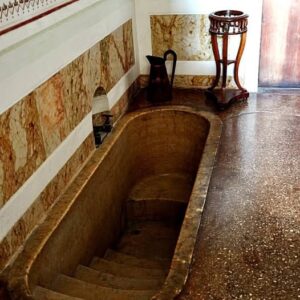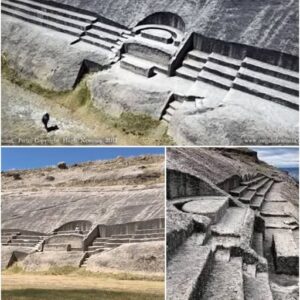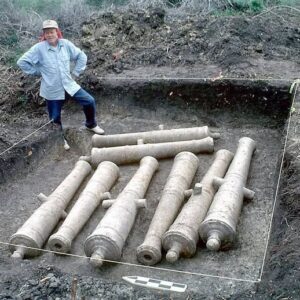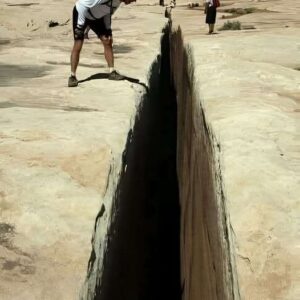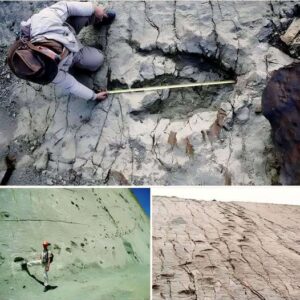Located in Campania, Italy, just 14 miles southeast of Naples, lies the ancient city of Pompeii, nestled at the foot of Mount Vesuvius. This historical site tells a remarkable tale that dates back to August 24, 79 CE when a catastrophic eruption from Mount Vesuvius wreaked havoc on Pompeii, shrouding it in a thick layer of volcanic ash. The following day, a surge of noxious gases swept through the city, resulting in widespread destruction of buildings and a devastating loss of life. Pompeii was ultimately buried beneath layers of ash and pumice, remaining hidden for centuries, safeguarded by the remnants of the volcanic eruption.
In the 1700s, dedicated excavation efforts began, unveiling the well-preserved ruins of a vibrant Greco-Roman city that had been miraculously frozen in time for over a millennium. Archaeologists unearthed a plethora of structures that provided a glimpse into the city’s past glory.

Among these were grand public edifices like the expansive forum and a majestic amphitheater, as well as luxurious villas and private residences dating back to the 4th century BCE. The most striking discoveries were the hauntingly preserved human figures captured in their final moments – some seemingly seeking shelter, while others attempting to flee from the impending disaster. Even the mundane aspects of daily life were immortalized, with remnants of bakeries revealing loaves of bread still baking in the ovens.
These astonishing findings not only shed light on the daily routines of Pompeii’s ancient denizens but also reignited a fascination for classical history during the 18th century. The excavations offered a poignant yet captivating glimpse into a bygone era, allowing modern-day visitors to connect deeply with the people who once walked the bustling streets of this ancient city.
The rediscovery of Pompeii stands as a testament to the resilience of the human spirit in the face of natural calamity, showcasing the enduring legacy of a civilization lost to time but resurrected through meticulous archaeological endeavors. It serves as a poignant reminder of the fragility of life and the impermanence of even the mightiest of cities, frozen in a moment of destruction yet destined to endure in the annals of history.
